Israel-Hamas War: What happened on day 86?
Israel can only discuss 'day after' when Gaza war ends, Netanyahu claims • IDF intercepts Iraqi drone over Golan Heights, strikes in Lebanon
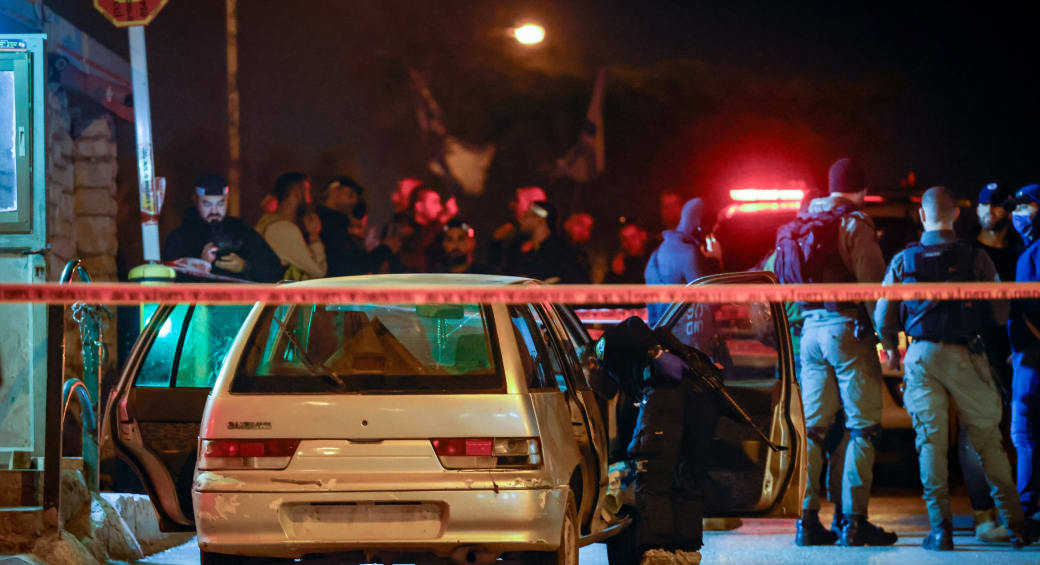

IDF says it 'must think' about post-war Gaza after Netanyahu comments
Prime Minister Benjamin Netanyahu insisted that discussions about what would happen to the Gaza Strip "the day after" the war ends would need to wait until Hamas was defeated.

The IDF must look ahead to the future as it operates in the Gaza Strip, Israeli military spokesperson R.-Adm. Daniel Hagari said in a Sunday evening briefing.
Earlier on Sunday, Prime Minister Benjamin Netanyahu insisted that discussions about what would happen to the Gaza Strip "the day after" the war ends would need to wait until Hamas was defeated.
Netanyahu: Israel can only discuss day after when Gaza war ends
Speaking in a Sunday cabinet meeting, Netanyahu said that the "day after must get here first."
"In order to talk about the day after, it needs to get here first. Only the IDF will have control," the prime minister said.
"Obviously, the Strip will be demilitarized. There will be no power except Israel," said Netanyahu.
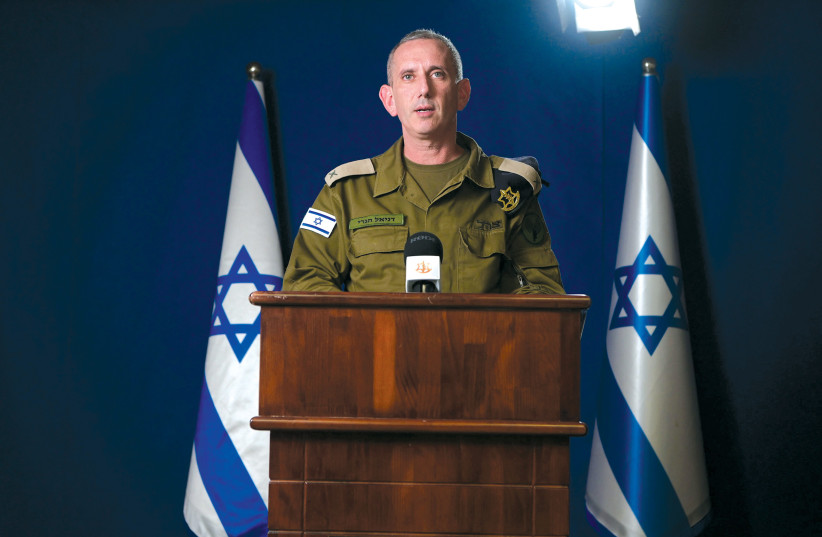
Iran-backed Houthi attack on Maersk Hangzhou is new escalation
Two Houthi attacks on the Maersk Hangzhou commercial ship in the Red Sea between Saturday and Sunday represent a new escalation by the Iranian-backed Houthis.
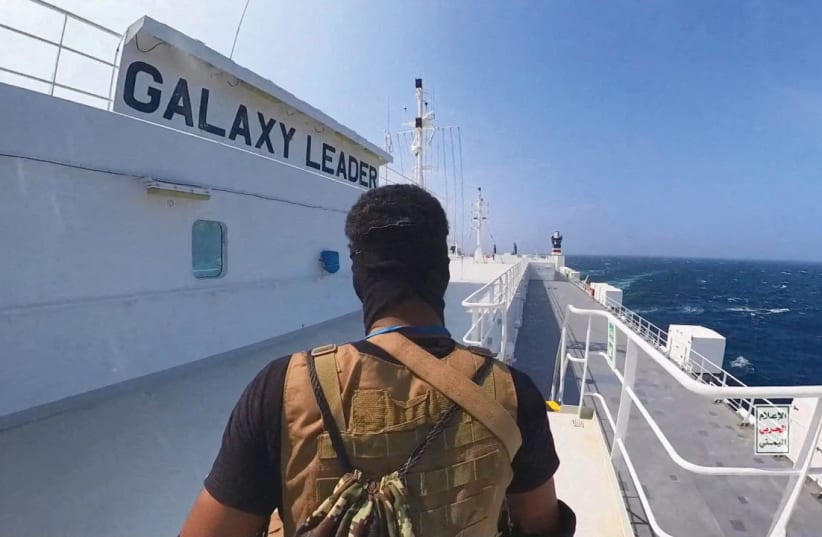
Two Houthi attacks on the Maersk Hangzhou commercial ship in the Red Sea between Saturday and Sunday represent a new escalation by the Iranian-backed Houthis. It also represents a forceful new approach by the US to stop small boats from trying to interdict the ship.
It is important to note that the Danish company Maersk said last week it was going to resume shipping via the Red Sea after several companies had paused shipping via the important waterway due to Houthi attacks. The BBC reported on December 27 that “Danish shipping giant Maersk has said it is preparing to resume shipping operations through the Red Sea and Gulf of Aden. The move follows the deployment of an international military operation to prevent attacks on commercial ships by Yemen's Houthi rebels. Several firms have paused shipments via the Red Sea following the attacks.”
US Central Command said that at 8:30 pm in the evening in Yemen, the Houthis first attempted to attack the Maersk Hangzhou. The ship “reported that they were struck by a missile while transiting the Southern Red Sea. The Singapore-flagged, Denmark-owned/operated container ship requested assistance, and the USS Gravely (DDG 107) and USS Laboon (DDG 58) have responded to the ship. The vessel is reportedly seaworthy and there are no reported injuries.”
The Gravely is one of the numerous US ships now protecting ships in the Red Sea. It has joined the Laboon, USS Mason and others that have played a key role over the last month. “While responding, the USS Gravey shot down two anti-ship ballistic missiles fired from Houthi-controlled areas in Yemen toward the ships,” the US said. Central Command also specified that “this is the 23rd illegal attack by the Houthis on international shipping since November 19.”
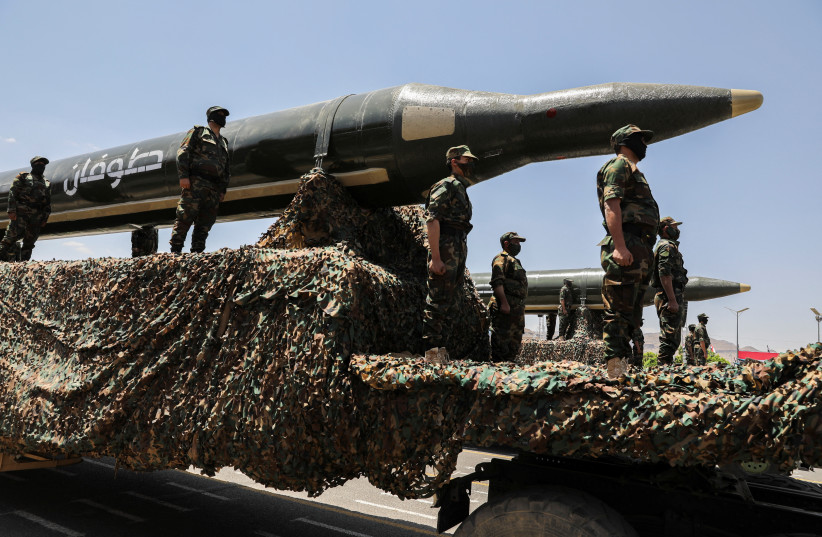
Con![]()
What’s interesting is that the Houthis did not stop with the missile attack. They then dispatched a number of small boats to attack the ship. US Central Command was blunt in its language about the second incident, which occurred at 6:30 am on December 31. “Iranian-backed Houthi small boats attack merchant vessel and U.S. Navy helicopters in Southern Red Sea,” the US said. This is an important statement blaming the Houthis and mentioning Iran.
The Maersk Hangzhou issued a distress call saying it was being attacked by four small boats. “The small boats, originating from Houthi-controlled areas in Yemen, fired crew-served and small arms weapons at the Maersk Hangzhou, getting to within 20 meters of the vessel, and attempted to board the vessel.”
The US ships in the area then sent helicopters, which represents a new tactic they are using to confront the Houthis. The statement by US Central Command says the helicopters came from the US aircraft carrier the USS Eisenhower and the Gravely. The Gravely is a destroyer. “The small boats fired upon the US helicopters with crew-served weapons and small arms. The US Navy helicopters returned fire in self-defense, sinking three of the four small boats and killing the crews. The fourth boat fled the area. There was no damage to US personnel or equipment.”
The incident is unique in several ways. First of all, it is interesting the Maersk had decided to resume shipping, and the Houthis then targeted this specific ship. It is not clear if the Houthis chose the ship, but it does send a message that a company that sought to resume shipping was then attacked.
The US response to the attack was robust. The sinking of the small boats is an important development. The Houthis are trying to escalate, and they are being matched with the defensive capabilities of the US Navy. They are not yet deterred, but the incident illustrates that they can take losses in these encounters.
Who could be Israel's next Iranian targets after killing of Mousavi?
After an Israeli airstrike killed senior IRGC commander Sayyed Razi Mousavi, Iran International published names of who could be Israel's next targets.
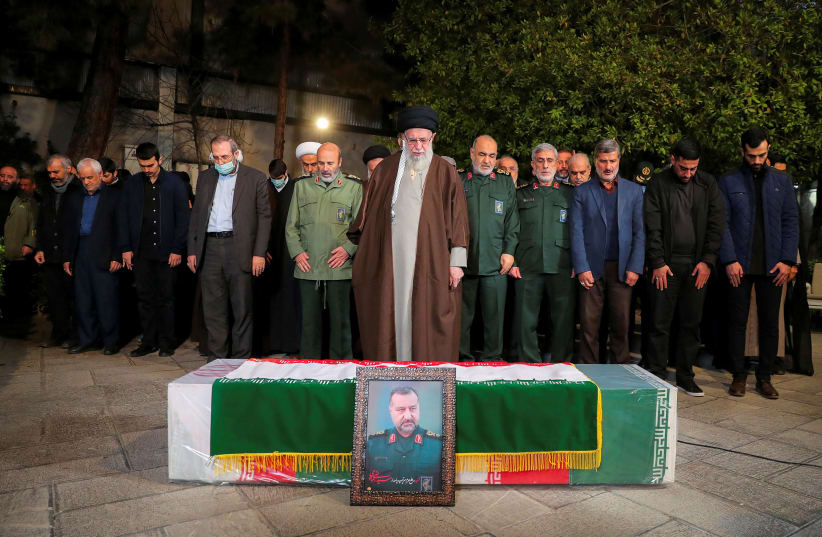
Following Prime Minister Benjamin Netanyahu's speech on Saturday night, in which he warned Iran and stated he would not detail any Israeli actions against it, Iran International has reported further Israeli elimination targets. This comes after an airstrike in Syria attributed to Israel killed Sayyed Razi Mousavi, a senior Islamic Revolutionary Guards Corps (IRGC) official in Syria.
Mousavi was killed during an attack that occurred on November 25 near Damascus. He was the commander of the logistics bureau of the Lebanon Corps within the IRGC. Mousavi was instrumental in establishing the Iranian presence in Syria, a key factor in the relationship between Iran, Syria and Hezbollah, and the advancement of weaponry to Israel's northern front.
Mousavi communicated directly with the Syrian regime and, through it, promoted Iranian interest in Syrian territory. He was a central factor and initiator, with much experience and extensive connections in the arena. He was entrusted with the execution of most of the transfers of weaponry by land, air, and sea. For example, he would personally oversee the unloading of Iranian passenger flights carrying sensitive weapons for Iranian emissaries in Syria and Hezbollah in Lebanon.
He was the head of the logistics bureau of the Lebanon Corps (Unit 2250) within the IRGC, which was established in order to carry out and facilitate transfers of weapons and Iranian equipment to Lebanon through Syria.
The unit is given special authorizations by the Syrian regime that include transit permits throughout the country and access to Syrian airports. The Iranian terminal at Damascus International Airport, for example, allows the reception of Iranian passengers together with weapons without the direct supervision of the security forces.
Oftentimes, the unit uses these authorizations in order to transfer weapons while the Syrian regime turns a blind eye and uses the authorizations they themselves have issued. In addition, the logistics bureau is responsible for unloading the cargo intended for the forces at the port of Latakia, e.g., in December 2021, containers carrying weapons were attacked while they were being unloaded by these parties in Syria.
Unit 2250 in the region
Unit 2250 has many logistical capabilities and assets throughout Syria that allow for the transfer of weapons, whose final destination is often Hezbollah in Lebanon. In light of the repeated Israeli attacks, there is no doubt that the unit's transferring capabilities have been significantly weakened; however, it still attempts to advance transfers in Syrian territory under the risk of being attacked.
Unit 2250 works in close cooperation with Unit 4400, Hezbollah's strengthening and cooperation unit led by Haj Fadi, which is responsible for transporting sensitive equipment from Syria to Lebanon.
The Syrian regime allows these transfers of equipment and dangerous weapons to be carried out through the country and gives the unit full freedom of action. It is evident that Israel usually carries out many attacks against these transferal units, and as a result, Syria continues to pay the price for this time and time again.
Additional heads of the logistics bureau include Abdullah Abadi, Mousavi's right-hand man; Zin Shams Abu Andan, a key figure in the bureau and a close associate of Mousavi; Hadi Feiz-Abadi, a senior logistics commander and representative of Unit 190, the weapon-transfer unit in the Quds force headed by Behnam Shahriyari.
Feiz-Abadi recently replaced Meitham Catabi, who coordinated the transfer of weapons together with Unit 190.




New Year, new strategy? Will Iran shift threats to Israel - analysis
Iran is bringing together militias and proxies across the Middle East to attack Israel.
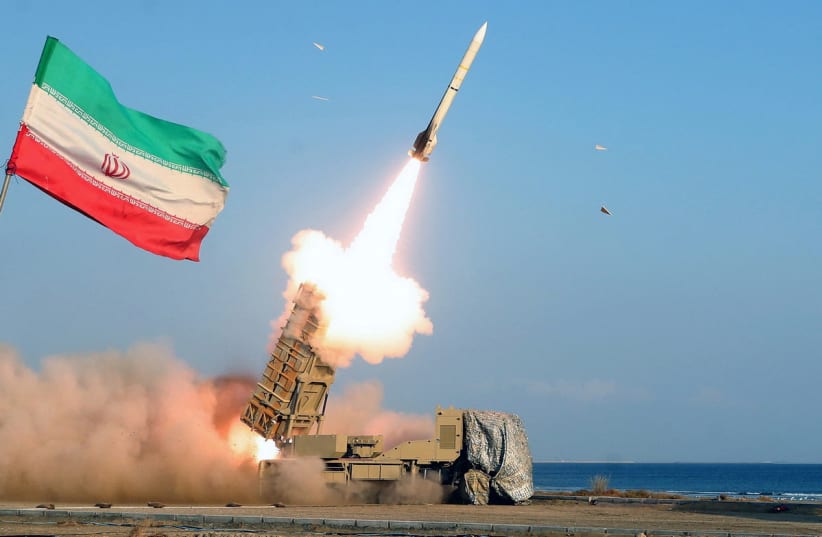
Iran has been dictating the tempo of the conflict against Israel for more than a year. It began in the fall of 2022 to heat up threats in the West Bank using Palestinian Islamic Jihad. After seeking to empower this proxy group and fill a vacuum left by the failure of the Palestinian Security forces in Jenin, Iran then turned its attention to other fronts.
Iran’s goal has been to “unify” the fronts or “arenas” against Israel. This means bringing together militias and proxies in numerous places; Gaza, the West Bank, Yemen, Lebanon, Syria, Iraq, and other places. Iran has already been able to key most of these arenas into the conflict against Israel.
For instance, back in 2021, Iran already unveiled the growing threat that Iraqi militias might pose, using drones for instance, and it also empowered groups in Syria beyond Hezbollah. What that means is Iran sought to bring Palestinian threats into Lebanon to bolster Hezbollah and also provide Hezbollah with plausible deniability in attacks. Basically, when rockets were fired over Passover 2023, the narrative would be that “a Palestinian militant group fired rockets.”
Iran put its plan into action after October 7, when Hamas attacked Israel in an unprecedented surprise attack and massacre. Iran brought Hezbollah into the conflict and operationalized the Houthis. It already had the assets in these countries to go to “work” against Israel.
For instance, the Shahed kamikaze drones had already been seen in Yemen, according to a January 2021 article in Newsweek. Precision Guided Munitions were already being moved to Lebanon. “Killer drone” teams were already in Syria since 2018. Iran had already tried to move air defenses into Syria in 2018 in preparation for escalation.
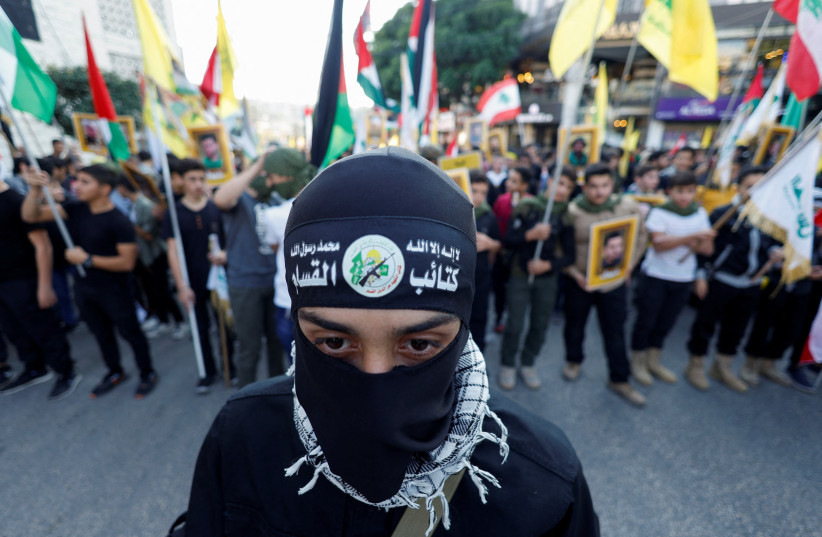
With all the pieces on the board, Iran then moved them into action on October 8. However, the question now is, as we approach 90 days or three months into the war, what is Iran’s next plan.
Iran's next move
Iran has been dictating the tempo of the attacks, as noted above. Iran chose to get the Houthis to try to blockade the Red Sea. The US responded with a new task force to help safeguard the freedom of navigation of the seas. Iran sought to bring Hezbollah into the conflict, and the US sent an aircraft carrier on October 7 to deter Iran and its proxies.
It’s important to note that Israel has sought to focus on Gaza and proportionately respond on the northern border to Hezbollah threats. Nevertheless, Hezbollah has lost some 120 of its fighters since October 8. This is not such a small number for Hezbollah which prides itself in its individual fighters. Unlike Hamas, Hezbollah doesn’t like to waste its recruits. The Houthis, by contrast, have not taken any public losses. Militias in Iraq and Syria are intact.
Iran now has a choice. One of its key IRGC officers in Syria, Razi Mousavi, was killed last week. That was an important loss for Iran, and it has blamed Israel for the killing and vowed revenge. However, on December 31, Iranian media was focused on domestic politics. This means Iran is still considering its next moves.
Nevertheless, the Houthi threats persist. They have continued to try to attack shipping in the Red Sea over the last several days. Pro-Iranian militias in Syria also targeted US forces over the weekend. The Houthis Al-Masirah said the “Iraqi resistance” had targeted the US bases in Syria.
Why did the Houthi media say the Iraqis carried out the attack? It's not clear, but it shows how the pro-Iranian groups in Iraq and Syria coordinate and work together and are basically all the same group.
US defense is having an effect
In the Red Sea, the USS Gravely, a guided-missile destroyer, shot down two anti-ship ballistic missiles on December 30. A ship named the Maersk Hangzhou was also struck by a missile. This is believed to be the 23rd attack on ships since November 19, the US Central Command said in a statement.
The US has also broken new records in downing missiles over the Red Sea, giving their air defenses a workout and testing out how all these defenses work against missiles and drones.
On December 31, the Houthis tried to target the Maersk Hangzhou again. Small boats came within 20 meters of the ship. Armed men, specially assigned to the commercial ship for protection, returned fire against the small boats. US helicopters from the USS Eisenhower, an aircraft carrier, and Gravely responded and sank several small boats. This is the first time the US has apparently sunk Houthi boats.
The Houthis clearly think they have impunity. However, that impunity may be running out. Iran, therefore, has to consider carefully its next moves.
If Israel is transitioning to a new phase in Gaza, with less intense combat, then all eyes will be on what Hezbollah will do next. Hezbollah is Iran’s largest proxy. Hamas, which posed a major threat on October 6, one that was largely misunderstood until the massacre the next day, has now seen many of its battalions defeated in Gaza.
The Iraqi and Syrian militias have many local problems to deal with. PIJ in Jenin has also been facing pressure and raids.
The Houthis have shown that they cannot prevent shipping in the Red Sea. In fact, Maersk had just announced on Friday that it would resume Red Sea shipping. This shows that the Houthis are still making a play for the Red Sea, but the US role is having an effect.
Go to the full article >>UK's Cameron: Iran shares responsibility for preventing Red Sea attacks

British Foreign Secretary David Cameron said on Sunday he had made clear in a call with Iranian Foreign Minister Hossein Amirabdollahian that Iran shared responsibility for preventing Houthi attacks in the Red Sea.
"I made clear that Iran shares responsibility for preventing these attacks, given their long-standing support to the Houthis," he said in a post on social media site X, adding that the attacks "threaten innocent lives and the global economy."
Go to the full article >>IDF publishes names of two fallen soldiers in battle in Gaza

The IDF published the names of two fallen soldiers on Sunday morning.
Warrant Officer (res.) Eliraz Gabai, 37, from Petach Tikva, was a soldier in Battalion 7810th Battalion in the 'Yiftah' Brigade, and fell in battle in the center of the Gaza Strip.
Sgt.-Maj. (res.) Liav Seada, 23, from Tiberias, was a soldier in the 7107th Engineering Battalion, and was killed in battle in the northern Gaza Strip.
Go to the full article >>US Naval helicopters repel Houthi attack on merchant vessel in Red Sea

US Navy helicopters sank three of four small boats used by Iranian-backed Houthi militants to attack a merchant vessel in the southern Red Sea on Sunday, US Central Command (CENTCOM) said on social media platform X.
Helicopters from the USS Eisenhower and USS Gravely, responding to distress calls from the Maersk Hangzhou, returned fire on the Houthi boats in self-defense and sank three of the vessels with no survivors. The fourth boat fled the area.
Go to the full article >>Israel is building case against Hamas terrorists in style of Eichmann trial - report
The Wall Street Journal revealed that investigators in the Israel Police and prosecution lawyers are compiling one of the most significant cases against Hamas terrorists.
Israel is reportedly building a significant legal case against Hamas terrorists responsible for the October 7 massacre, similar to the charges heard in the trial of Nazi Adolf Eichmann back in the early 1960s. This approach aims to establish the severe punishments that will be imposed on the surviving Hamas terrorists.
The Wall Street Journal revealed that investigators in the Israel Police and prosecution lawyers are compiling one of the most significant cases against Hamas terrorists who carried out the massacre on October 7.
According to the report, Israel is collecting numerous pieces of evidence, including testimonies of severe sexual assault, rape, burning of children, and dismemberment—all perpetrated by Hamas terrorists on that fateful Saturday. Israeli authorities estimate that the construction of such a case will allow for the imposition of severe punishments on the surviving terrorists.
"The investigation by Israel is expected to yield a trial that will be the most significant in the country since the early 1960s when Israel captured, tried, and executed Adolf Eichmann for his central role in the Holocaust," the article stated.
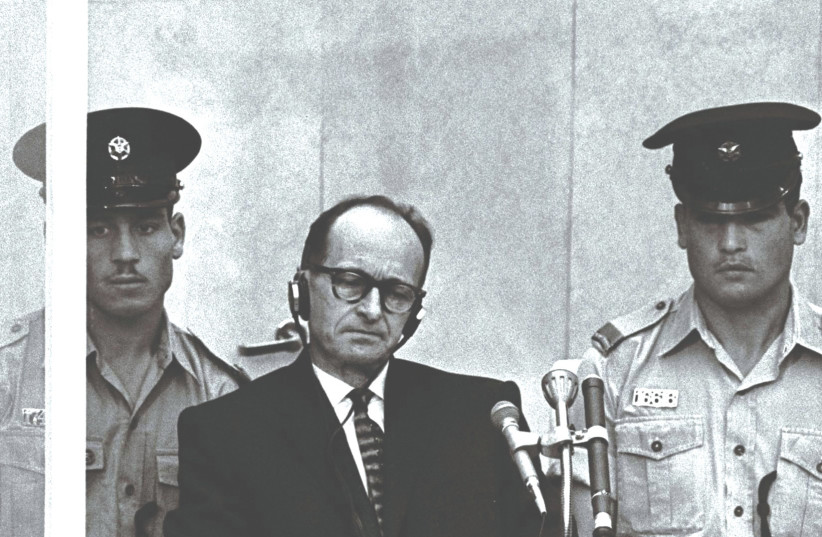 POLICE OFFICERS flank Adolf Eichmann at his trial in Jerusalem, in 1961. High-ranking Hamas figures should be subjected to a transparent and widely publicized trial, similar in style to the Eichmann trial, the writer argues. (credit: REUTERS)
POLICE OFFICERS flank Adolf Eichmann at his trial in Jerusalem, in 1961. High-ranking Hamas figures should be subjected to a transparent and widely publicized trial, similar in style to the Eichmann trial, the writer argues. (credit: REUTERS)
'One of most important trials' Israel has seen
 POLICE OFFICERS flank Adolf Eichmann at his trial in Jerusalem, in 1961. High-ranking Hamas figures should be subjected to a transparent and widely publicized trial, similar in style to the Eichmann trial, the writer argues. (credit: REUTERS)
POLICE OFFICERS flank Adolf Eichmann at his trial in Jerusalem, in 1961. High-ranking Hamas figures should be subjected to a transparent and widely publicized trial, similar in style to the Eichmann trial, the writer argues. (credit: REUTERS)"Israel has never dealt with crimes and investigations on such a scale," said former deputy attorney general Roy Schondorf who was quoted. "This will be one of the most important trials to take place in Israel."
According to the report, Israel Police are examining the testimonies of around fifty individuals who were captured, footage obtained from their cameras, social media, signposts, and security cameras from vehicles across southern Israel. The challenge for the investigation, legal experts say, is that the collection of forensic evidence was limited after October 7, while the Israeli military was engaged in combat in the region for days following the attack.
IDF discovers explosives, terror infrastructure in children's playground
The explosive devices had been prepared ahead of the soldiers' expected arrival and were safely neutralized.
Soldiers of the IDF's 14th Reserve Brigade discovered explosive devices in a children's playground connected to a kindergarten on the outskirts of the Shati refugee camp in northern Gaza. The devices had been prepared ahead of the soldiers' expected arrival and were safely neutralized.
Furthermore, IDF troops identified four Hamas terrorists who were carrying explosive devices advancing toward them. An Israeli Air Force aircraft thwarted the cell. Approximately half an hour later, the troops identified four additional terrorists in the area, who were subsequently targeted in an aerial strike. Simultaneously, a vehicle with terrorists inside was identified approaching IDF troops in southern Gaza City. An aircraft struck the cell, resulting in the elimination of the terrorists.
Additionally, an IAF fighter jet, directed by IDF troops, struck a military compound from which Hamas terrorists had detonated an explosive device at IDF soldiers.
During an IDF operation to thwart terror activity in Beit Lahia, the troops identified three Hamas terrorists entering a framed building. The troops then directed an IAF aircraft that struck the terrorists with precision.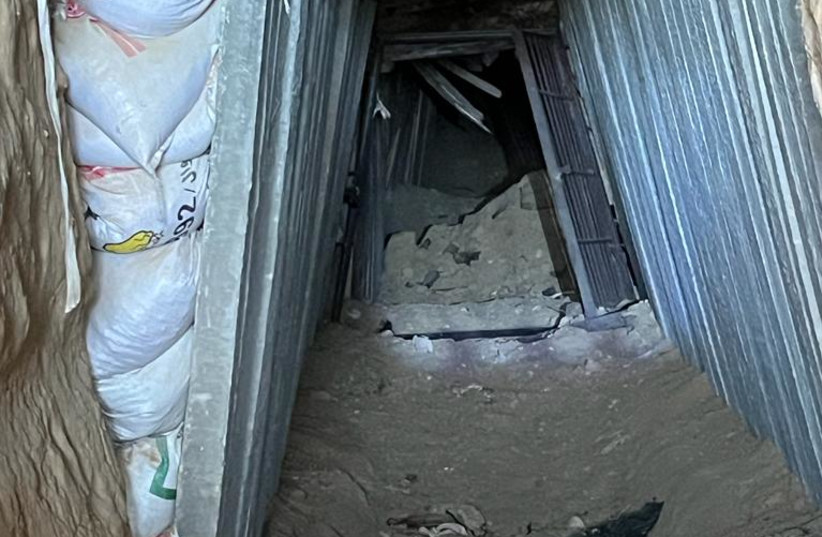
IDF operations in southern Gaza
IDF troops from the Desert Reconnaissance Battalion (Bedouin Battalion) operated in the southern Gaza Strip in order to locate terrorist infrastructure and uncovered two tunnel shafts, which they uncovered in cooperation with armored and engineering forces using tanks and D-9.
IDF troops operating in Khan Yunis identified three terrorists and directed an aircraft strike that killed one of them. Following that, the two remaining terrorists were identified carrying an RPG between buildings, and an IDF tank fired toward them.
In addition, three terrorists were identified by IDF troops, who then directed an aircraft that killed all three.
Overnight, in order to assist the ground forces, IAF fighter jets struck dozens of terror targets, including military compounds, terrorist infrastructure, and a tunnel. Israeli Naval forces also assisted ground forces with strikes on terror targets.
Go to the full article >>UKMTO receives report of attack northwest of Yemen's Hodiedah - advisory note

The UK Maritime Trade Operations (UKMTO) agency received a report of an attack on a ship 60 nautical miles northwest of Yemen's port of Hodiedah in the Red Sea, an advisory note said on Sunday.
UKMTO said that an unidentified vessel reported being attacked by three small boats on its port side, and shots were exchanged.
All crew have been accounted for with no casualties, UKMTO added.
Go to the full article >>Israel-Hamas War: What you need to know
- Hamas launched a massive attack on October 7, with thousands of terrorists infiltrating from the Gaza border and taking some 240 hostages into Gaza
- Over 1,200 Israelis and foreign nationals were murdered, including over 350 in the Re'im music festival and hundreds of Israeli civilians across Gaza border communities